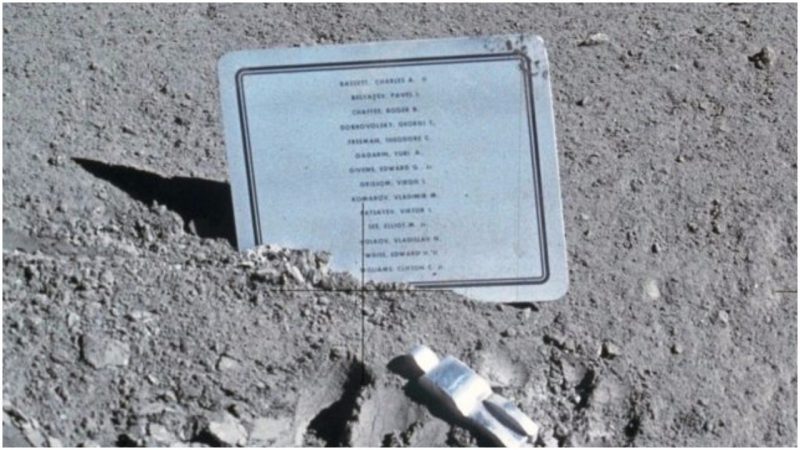Humanity is still in the early stages of space exploration, and the road to modern-day advancements hasn’t been smooth. Many brave astronauts and cosmonauts have lost their lives in the effort to take our species into space, and ensure we remember their names. Up until today, some of our biggest space exploration achievements have been the Apollo mission and first lunar landings. Those courageous people who went to the Moon were aware of the sacrifice their deceased colleagues made before them, and they surely didn’t forget about them.
There isn’t a greater way to pay respect to fallen astronauts than carrying their memory into space, out there where they strived to go. This is exactly what the crew of Apollo 15 did in 1971. They placed a specially-made sculpture and a commemorative plaque on the surface of the Moon. It became the first artistic object to be displayed outside of our planet.
The sculpture named Fallen Astronaut is an 3.3 inch (8.5 cm) aluminum figure depicting an astronaut in a spacesuit. The statue was designed and made by a Belgian artist called Paul Van Hoeydonck after a meeting with the crew of Apollo 15 in Cape Kennedy. The idea came during a dinner in Cocoa Beach (now a La Quinta) restaurant. Hoeydonck was introduced to astronauts David Scott and Jim Irwin, the mission’s Lunar Module pilot. During the meal, Scott and Hoyendonck shared their interest in archaeology and Mayan mythology.
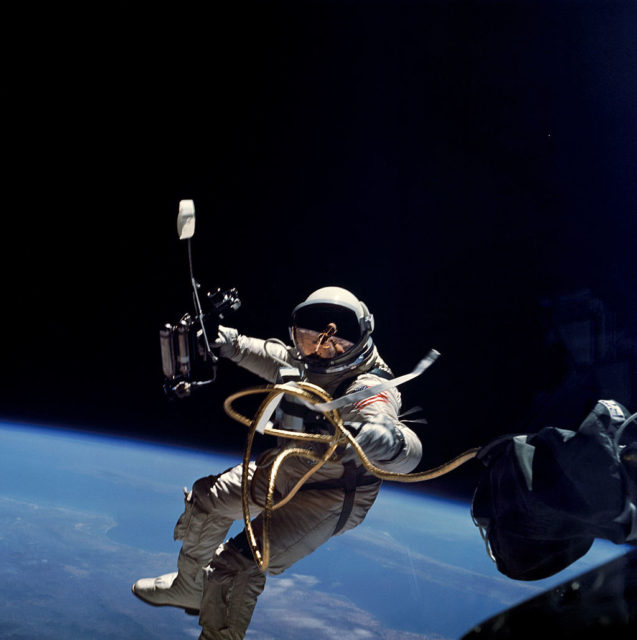
After Hoyendonck compared the astronauts with medieval knights (the astronauts of the Holy Grail), Scott, who was aware of his work, decided that they should “get him a sculpture on the Moon!” Hoyendonck was excited and immediately went back to Belgium to work on a prototype.
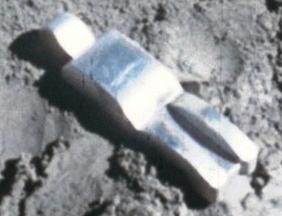
In an interview with Slate magazine Hoeydonck explained what was required for the sculpture:
“The sculpture had to be small, and I was told by Scott that it was not allowed to be any race—not black, not red—not male, not female, and able to resist extreme cold and hot. So I had to design a thing like that.”
The final prototype and the sculpture that was going to be sent to the Moon was made of aluminum and hand-crafted by Hoyendonck himself. Aluminium was chosen because of its light weight. The whole thing was kept in secret, and even NASA didn’t know about it.
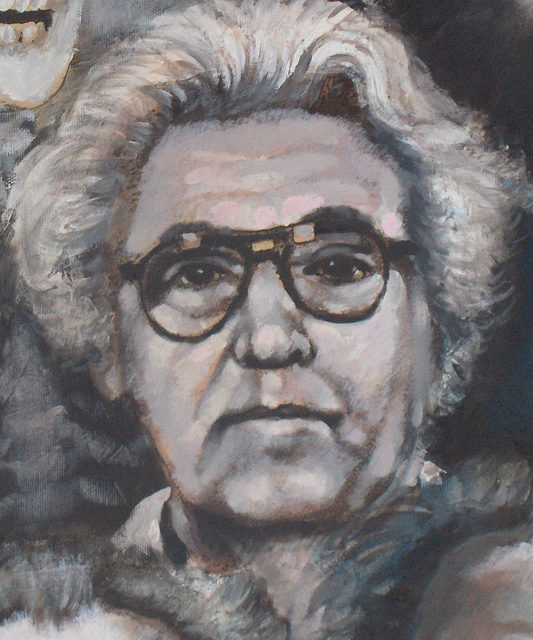
The day of the launch of Apollo 15 was getting closer. Final preparations were being made for the launch day. And one of David Scott’s last-minute tasks was smuggling the little sculpture in his oversized pocket.
The lunar module touched down on the Moon on July 30, 1971, in the Hadley-Apennine region, between a ravine and a range of steep mountains.
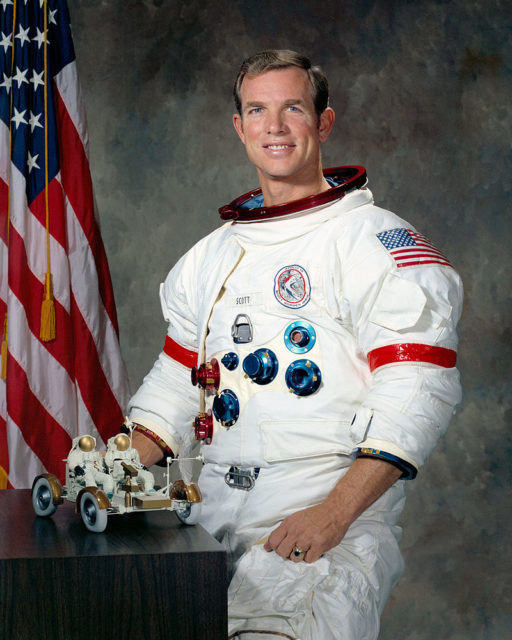
Apollo 15 was the first mission in which a lunar rover was used, so on August 1, 1971, after finishing his daily tasks on the surface, Scott parked the rover at Hadley Rille and held a small Fallen Astronaut ceremony:
“I was going to drive the rover out, set up a TV camera to watch the liftoff, put down the little astronaut and the plaque, and take a photo,” he says. “On Apollo 15 we took over 1,100 photos on the surface of the moon, and all those are without any rangefinder or light meter. So that was another part of setting up the Fallen Astronaut: making sure I got a good photo of it, because nobody knew about it,” he told Slate.
The sculpture was laid down (although the artist intended that it should be standing up) next to a plaque upon which the names of fourteen American and Soviet astronauts and cosmonauts who have lost their lives were written.
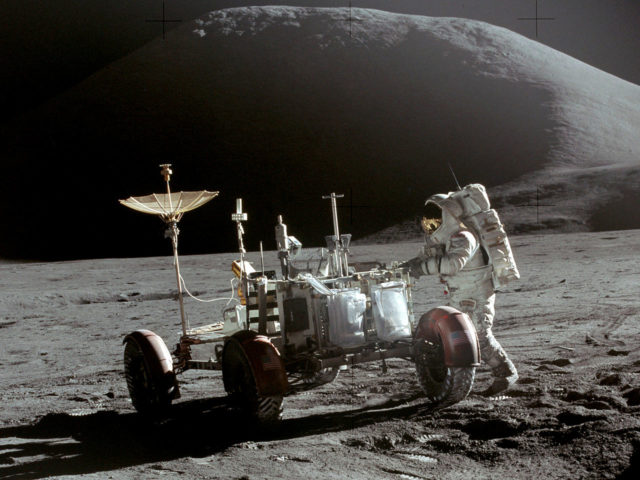
Unfortunately, instead of celebrating the lives of fallen astronauts, the whole story turned into a scandal. After the crew returned from the moon and publicly disclosed the sculpture, the National Air and Space Museum called the artist and requested a replica. It turned out that Hoeydonck understood the whole agreement differently. He tried to sell nearly a 1,000 copies of the statue but abandoned the idea because of NASA’s strict policy towards the exploitation of the U.S. space program.
Scott’s and Hoeydonck’s memories of the agreement are different; Scott said that he just wanted to commemorate the fallen astronauts and that is why he designed the plaque with the names of the 14 men. He claims that he agreed that Hoeydonck’s name wouldn’t appear in public because of the space program exploitation issues.
Van Hoeydonck, on the other side, thought that the sculpture would be a symbol of all mankind and its desire to conquer space. Instead it was used as a memorial. He also told reporters that he didn’t choose the name (Fallen Astronaut) of the statue. Hoeydonck also thought that he would be credited for his work.
The sculpture never received any major recognition. It was almost forgotten until recent years when space history blogs and magazines started writing about it. After the scandal, Hoeydonck continued his modest career in Belgium.
